How To Choose The Right Dining Chairs For Your Table
How To Choose The Right Dining Chairs For Your Table
By Jack
14th Jul 2025
Finding dining seating that feels as good as it looks can feel like musical chairs. If you’re sizing up how to choose dining chairs that serve comfort, style and everyday practicality keep our guide close at hand.
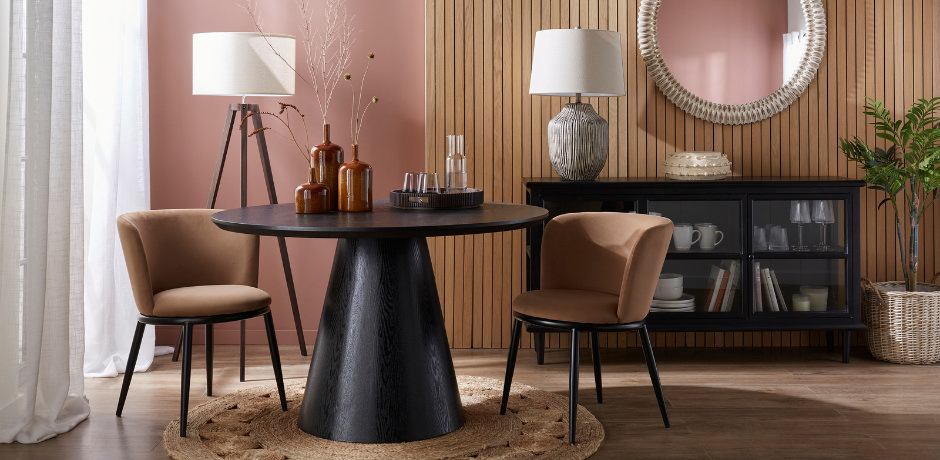
Finding dining seating that feels as good as it looks can feel like musical chairs, especially when online catalogues show thousands of options. This guide walks you through every practical checkpoint, so you can choose dining chairs that fit your table, suit your lifestyle, and still earn you compliments years down the line.
In This Article
- Start with Scale: Table & Chair Proportions
- Let Table Shape Lead the Seating Plan
- Match Seat Height to Table Height
- Check Chair Width, Depth & Spacing
- Mind Arm & Back Heights
- Comfort Considerations
- Choose Materials That Suit Real Life
- Think Ahead to How You Really Live
- Dining Chair Style Tips
- FAQs: Picking the Best Dining Chairs
- Final Thoughts
Dining Chair Size Guide: Measure for a Perfect Fit
1. Start with Scale: Table & Chair Proportions
Look first at your table’s proportions, shape, and overall mood. Dining chairs should echo, never dwarf, nor disappear beside the dining table. A delicate bistro top suits slim, open back seats; a hefty farmhouse trestle welcomes broad ladder‑backs; and an airy modern slab begs for sleek, minimalist silhouettes. By the same token, a richly carved antique table calls for chairs with comparable presence so the setting feels balanced, not lopsided.
Aim for at least one shared element with your dining chairs and dining table: wood tone, metal finish, leg profile, or design era to stitch the mix together. Distressed ladder‑backs deepen a rustic trestle’s cottage vibe, curved velvet chairs soften the edge of a glass‑top, and fabric‑lined forms can mellow an industrial steel base, while moulded plastic can just as boldly double‑down on that modern attitude. When the conversation between table and chair feels deliberate, the mismatch reads curated, not chaotic.
If a ready made matching set is easy on the wallet or simply catches your eye, embrace it; you can always layer in a few contrasting pieces later.
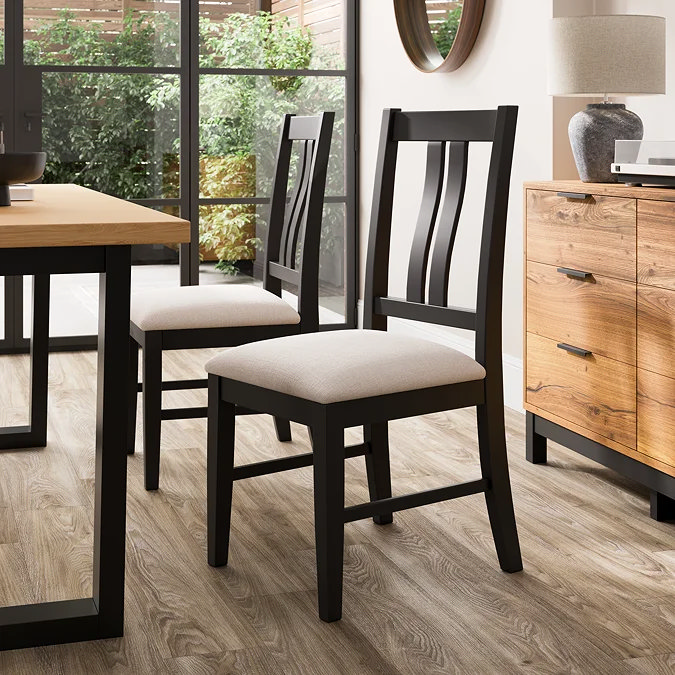
2. Let Table Shape Lead the Seating Plan
Rectangular tables often feature armed captain’s chairs at the heads and simpler side seats along the length.
Round or oval tables call for compact chairs that tuck fully so guests aren’t crowded.
Square tables love four identical seats; if yours extends, keep extra chairs or a slim bench nearby.
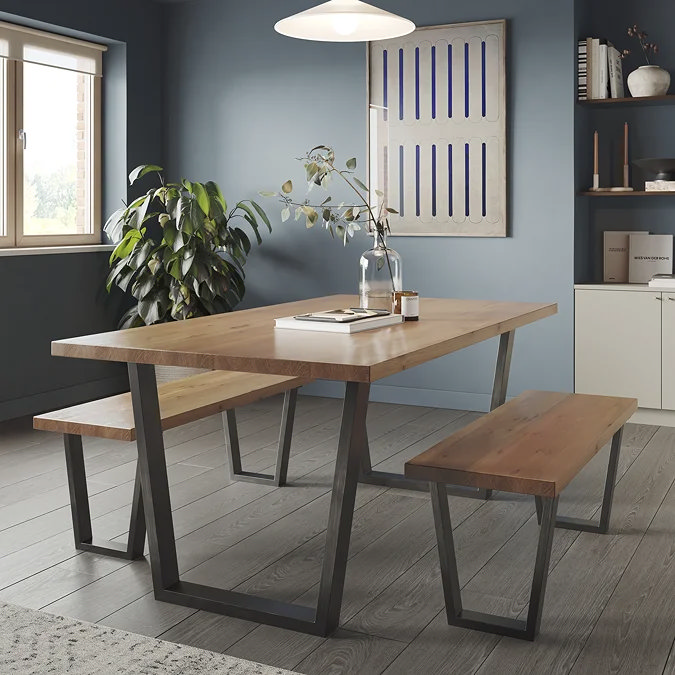
3. Match Seat Height to Table Height
Before you fall for a dining chair’s looks, reach for the tape measure. Most dining tables stand around 28–30 in | 71–76 cm high; the most comfortable seats sit roughly 18–20 in | 46–51 cm off the floor, leaving a 10–12 in | 25–30 cm gap for knees and crossed legs. Measure from the floor to the underside of the tabletop, or to the apron if there is one, then subtract that comfort gap to find your target seat height. If the chair is upholstered, measure it again while you’re seated and add back any cushion compression so the maths stays accurate.
Have a counter or bar height table? The same rule applies: match stools so there’s roughly a 10–12 in gap between seat and underside. A 36‑in counter wants a 24‑in seat; a 42‑in bar calls for something closer to 30 in.
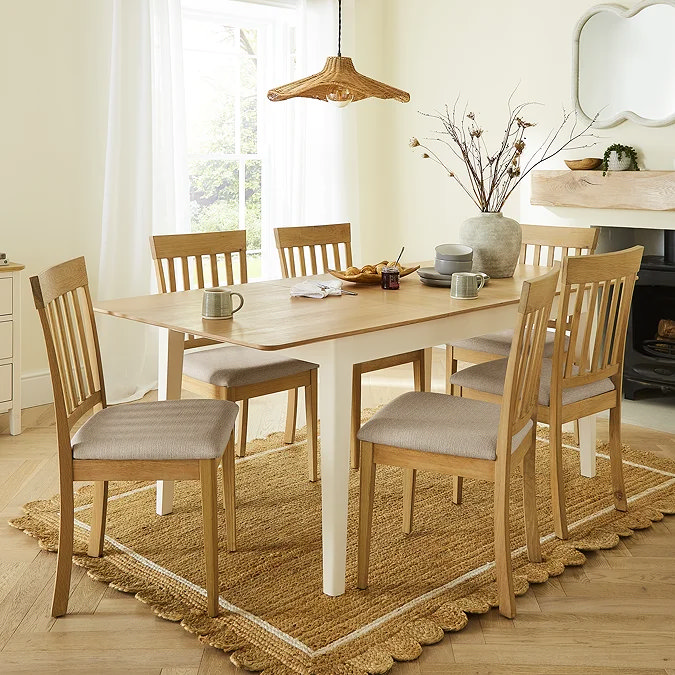
4. Check Width, Depth & Spacing
Space between diners matters just as much as height. About 24 in | 60 cm of table length per person keeps elbows from clashing; a 180 cm table, for instance, seats three comfortably on each side. Wide or armed chairs may need extra breathing room, and on round tables leave at least a couple of inches between chair edges so no one feels squeezed.
Remember the area around the table, too. Aim for a 36 in | 90 cm walkway between table edge and walls or furniture so guests can slide chairs back without scraping. In tight flats you can shave that a little, but lay painter’s tape on the floor first to map the footprints—you’ll see instantly whether circulation feels easy or cramped.
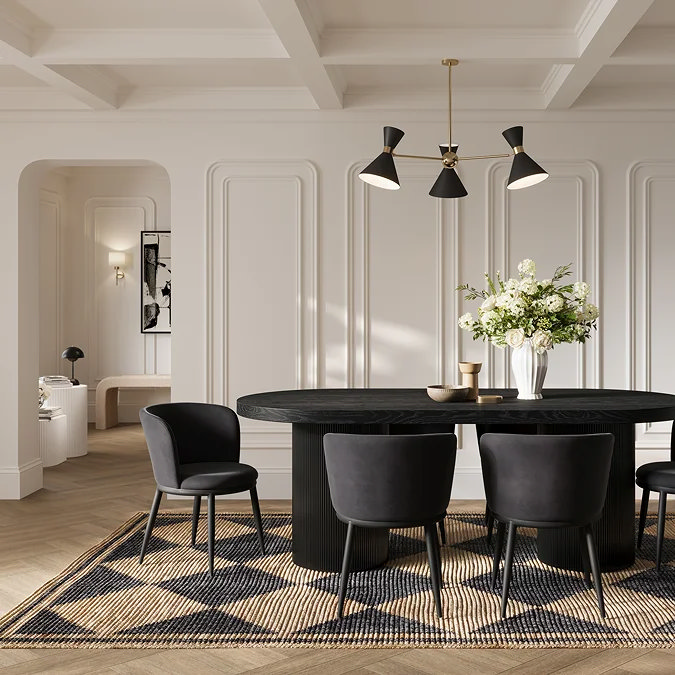
5. Mind Arm & Back Heights
Whatever you choose, make sure each chair slides under the top, apron, pedestal, or trestle without a bump. Keep backs at least a couple of inches above the tabletop so the ensemble doesn’t look squat, and favour low or open backs if you need to preserve sight lines in a small dining room. If you use chairs with arms, ensure the arms don’t brush the underside of the table; diners should pull in close without damage to either piece.

6. Dining Chair Comfort Considerations
When it comes to dining chairs, comfort is king. You’ll likely spend hours sitting in these chairs, from hurried weekday breakfasts to lingering holiday dinners, so they need to feel good beyond the first impression. If possible, “try before you buy.” Pull a candidate chair up to a table (ideally a table of similar height to yours) and sit for several minutes. Pay attention to how your back, thighs, and feet feel. Are you sitting upright in a relaxed way, or are you perching uncomfortably? Do your feet rest flat on the floor (they should), and is there pressure on the back of your thighs? A well designed dining chair will encourage a natural posture and prevent fatigue.
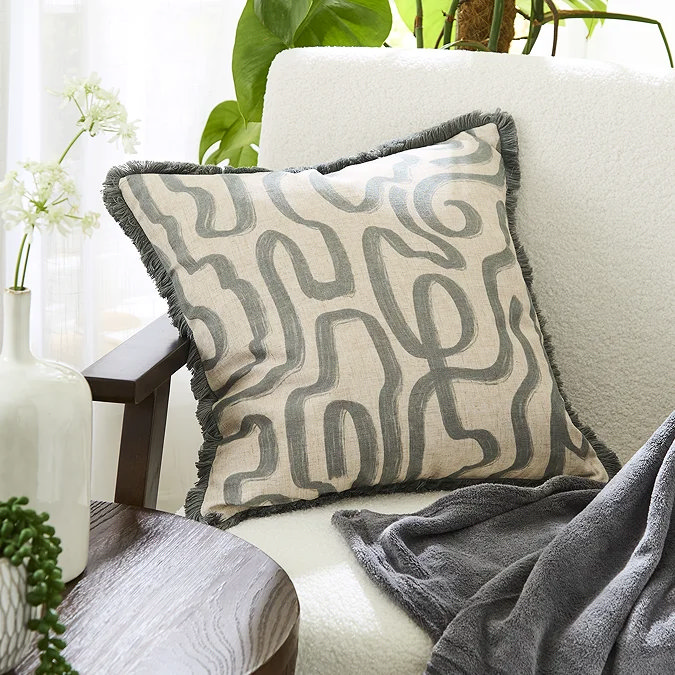
7. Choose Chair Materials That Suit Your Daily Life
When choosing dining chair materials, think first about spills, pets, and how long people actually sit at your dining table, then pick the finish that will meet those realities with grace.
Solid wood earns its keep through strength and longevity. A quick wipe handles most messes, and light sanding or a fresh coat of oil can erase years of wear, while a clip‑on cushion adds instant softness if the seat feels firm.
Powder‑coated metal brings slim lines that suit modern or industrial spaces and shrugs off humidity and frequent cleaning. If you prefer a warmer feel, simply top the seat with a pad or throw.
Leather and today’s high quality faux leathers combine easy wipe care with a refined look. Real hides mellow into a rich patina, while vegan versions give similar practicality at a friendlier cost; both feel luxurious once they match the room’s temperature.
Upholstered fabrics such as velvet, linen, or bouclé offer plush comfort and a chance to introduce colour or pattern. Choosing performance weaves or removable covers keeps upkeep straightforward, even in homes with children or enthusiastic dinner guests.
Natural fibres, rattan, cane, or wicker, add relaxed texture and disguise everyday dust, and an occasional hoover keeps their weave tidy. They work beautifully for casual meals or as accent chairs around a larger set.
Plastic or clear acrylic chairs are feather light, stack easily, and virtually disappear in tight spaces while still wiping clean after craft projects or family pizza night.
Match the dining chair material to the level of maintenance you’re comfortable with, and your dining chairs will look welcoming from breakfast through to the last cuppa.
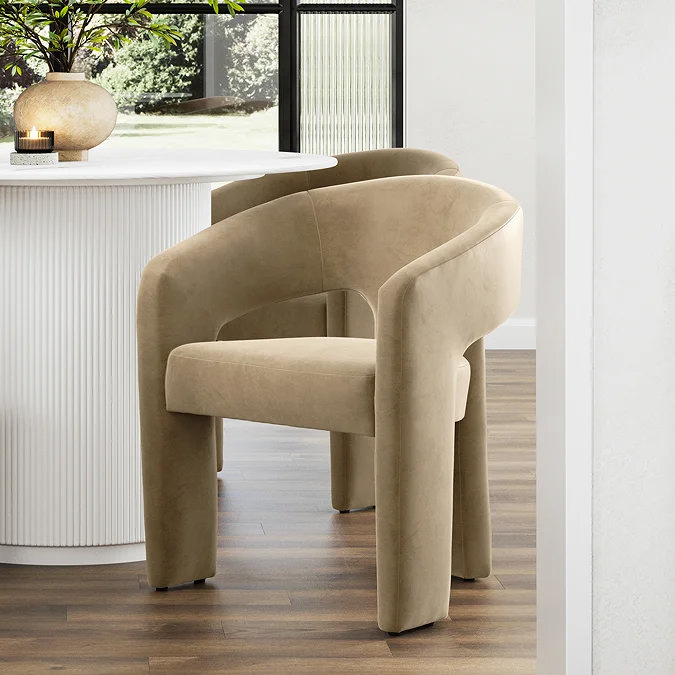
8. Factor In How You Really Live
Step back and picture your dining area in daily motion, it’s rarely just a place to eat. If your dining table doubles as a laptop hub or homework station, favour dining seats with genuine back support, a gentle swivel, or even casters. A chic office chair at the head of the table can slide seamlessly from spreadsheets to supper without looking out of place, and the swivel spares both floor and posture when you pivot from screen to conversation.
In tight quarters, choose dining chairs that vanish when you need floorspace. A backless bench slips entirely beneath the tabletop, and stackable or folding chairs rest quietly in a closet until guests arrive. Benches take a bit more manoeuvring than individual chairs, yet they make a slender dining nook feel generous, and a cushioned storage bench against the wall adds hidden space for linens and games.
Extendable dining tables introduce a new puzzle: where do the extra seats live on everyday days? Solve it by selecting spares attractive enough for other rooms, an upholstered host chair looks just as welcome in a bedroom corner, or by leaning a slim bench along a hallway wall until the next feast.
Little details matter over time. Felt pads or Teflon glides under every leg hush the scrape of chair against floor and shield hardwood and tile alike.
Ultimately, let life lead. If you host crowds, prioritise stackability and ‘easy clean’ finishes; if you dine mostly à deux, invest in two statement chairs and keep slim backups nearby. Whatever the mix, leave roughly 90 cm of clearance behind each seat so nobody feels boxed in when they push back from the table.
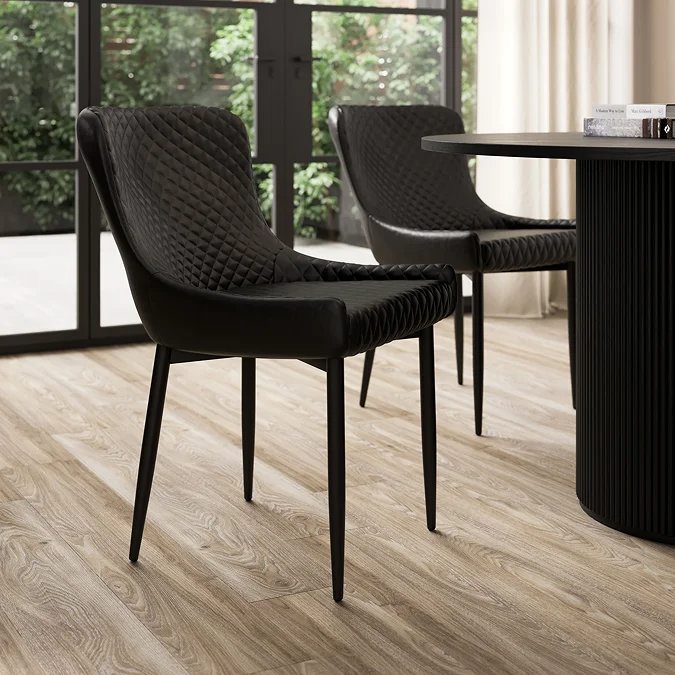
9. Pull It Together With Style
Current interiors celebrate when it comes to dining chairs. Jewel toned velvet, tactile cane backs, even a deliberate mix of old timber and new metal all feel fresh provided the palette is restrained. If you love several looks, blend them with intention. Two boucle armchairs in ivory can flank four black faux leather side chairs, united by their shared dark legs and a table centrepiece that carries both colours through the room. Remember that the most fashionable choice is the one that still feels welcoming after a three hour supper.
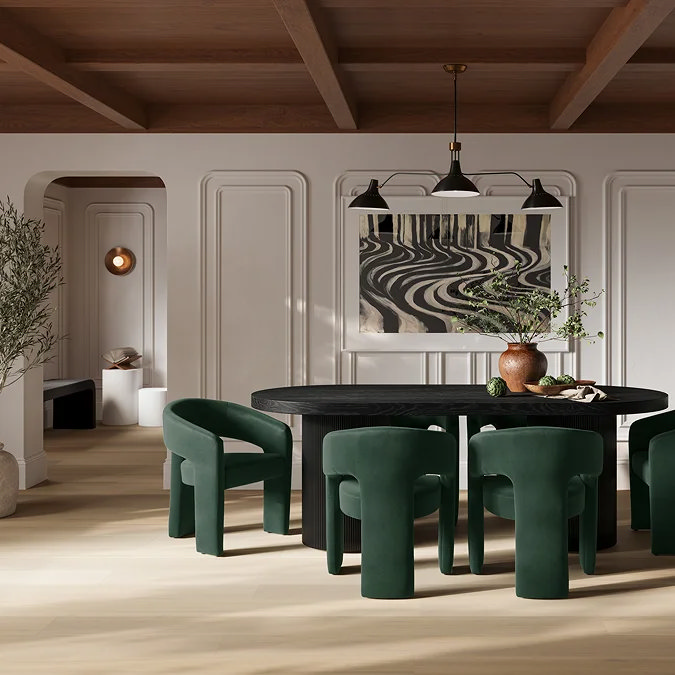
FAQs: Picking the Best Dining Chairs
How tall should dining chairs be for my table?
Aim for chairs with a seat height of 18-20 in (46-51 cm) so there’s about 10-12 in (25-30 cm) between the seat and the underside of a standard 28-30 in (71-76 cm) table.
How much space does each person need at the table?
Allow roughly 24 in (60 cm) of table length per diner to give everyone comfortable elbow room.
How much clearance should I leave around the table for chairs?
Keep about 36-48 in (90-120 cm) between the table edge and walls or furniture so guests can slide chairs back and walk behind them easily.
How do I make sure dining chairs fit under the table?
Measure from the floor to the underside of the tabletop (or apron) and ensure the seat, and any arms, sit at least a few inches below that height so the chair glides in without hitting.
Choose Dining Chairs With Confidence
Choosing dining chairs is a balance of measurement, material and mood. When those three elements align, the set fades into the background and the conversation takes centre stage. Browse, measure, sit, then trust your comfort test. The result will serve weekday breakfasts, festive feasts and every cup of tea in between.
Found this guide helpful? Share it with someone planning a dining room refresh and don’t forget to browse our full dining chair range for styles that suit every table and taste. For more inspiration, check out our latest blogs, including How to Furnish a Dining Room.

Jack
Jack is part of the resident home interiors team here at MFI. As a décor and DIY expert, he loves writing in-depth articles and buying guides, and is known for his expert step-by-step tutorials to help you style your home with ease.